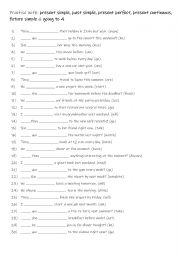
|
A2+-B1 Practise with present simple, past simple, present perfect, present continuous, future simple & going to 4
First, students need to familiarise themselves with the tenses and use. Then they read the sentences to work out which one is needed to complete the gap-fill using the infinitive in (). Each tense is used 3 times! Answers on page 2
Level: elementary
Age: 7-100
Type: worksheet
Downloads: 140
|
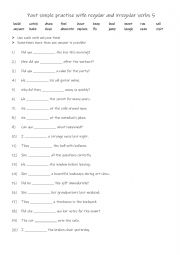
|
Past simple practise with regular and irregular verbs 5
Students first familiarise themselves with the 20 verbs. Then they complete the gap-fill with the correct form of that verb. Answers on page 2.
Level: elementary
Age: 7-100
Type:
Downloads: 140
|
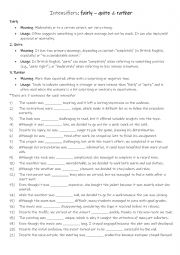
|
B1-B2 Intensifiers - fairly- quite - rather
Students read the meaning and usage of the 3 intensifiers, then read each sentence to see which quantifier is needed to complete the sentence. Answers on page 2 with an explanation why that one was used.
Level: intermediate
Age: 9-100
Type:
Downloads: 139
|
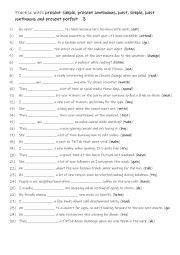
|
Practise with: present simple, present continuous, past, simple, past continuous and present perfect 3
First, students need to familiarise themselves with the 5 tenses and their use. Then they read the sentences to see which one is needed to complete the sentence using the given infinitive in (). Each tense is used 6 times! Answers on page 2.
Level: elementary
Age: 8-100
Type: worksheet
Downloads: 139
|
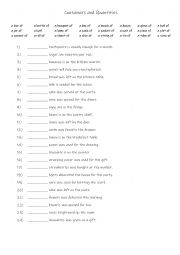
|
A2-B1 Containers and Quantities
Students complete the gap-fill with the correct container or quantity.Answers on page 2.
Level: elementary
Age: 8-100
Type:
Downloads: 138
|
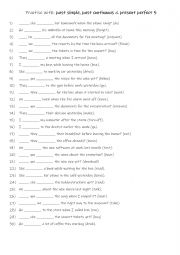
|
A1+ A2 Practise with past simple, past continuous & present perfect 5
First, students need to familiarise themselves with the 3 tenses and their use. Then they read the sentences to work out which one is needed to complete the gap-fill using the given verb in (). Each tense is used 9 times! Answers on page 2
Level: elementary
Age: 7-100
Type:
Downloads: 138
|

|
A2+-B1 Adjective + preposition + gerund 4
Learning adjective + preposition + gerund is essential for natural and fluent English. These structures are common in everyday speech, writing, and exams. They help express ideas accurately, but since prepositions don�t always follow logical rules, mastering them prevents common mistakes and improves overall communication.
Level: elementary
Age: 10-100
Type:
Downloads: 138
|
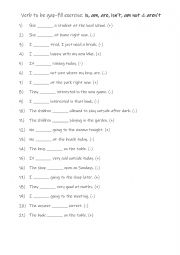
|
A1 Verb to be gap-fill exercise is, am, are, is not, am not & are not
Students first familiarise themselves with the present simple verb to be forms. Then they read the sentences looking for the clue in (+) (-) to see if a positive or negative form of the verb to be is required to complete the gap-fill.Answers on page 2
Level: elementary
Age: 8-100
Type:
Downloads: 137
|
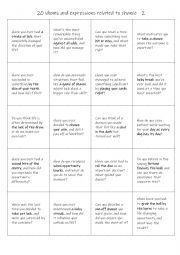
|
B1+-C1 Chance idioms and expressions 2
This is a speaking reinforcement activity to supplement the other worksheet I uploaded on 23/2/2025. Students working in pairs or small groups can either ask each other the questions or answer the question themselves.
Level: intermediate
Age: 12-100
Type:
Downloads: 137
|
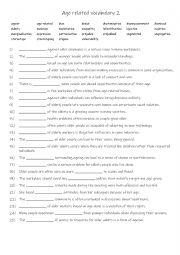
|
B1+-C1 Age related vocabulary 2
First, students need to familiarise themselves with the 25 words and their meanings Then they read the definitions to see which one is being described and write that word in the space provided. Answers on page 2.
Level: intermediate
Age: 11-100
Type:
Downloads: 136
|












